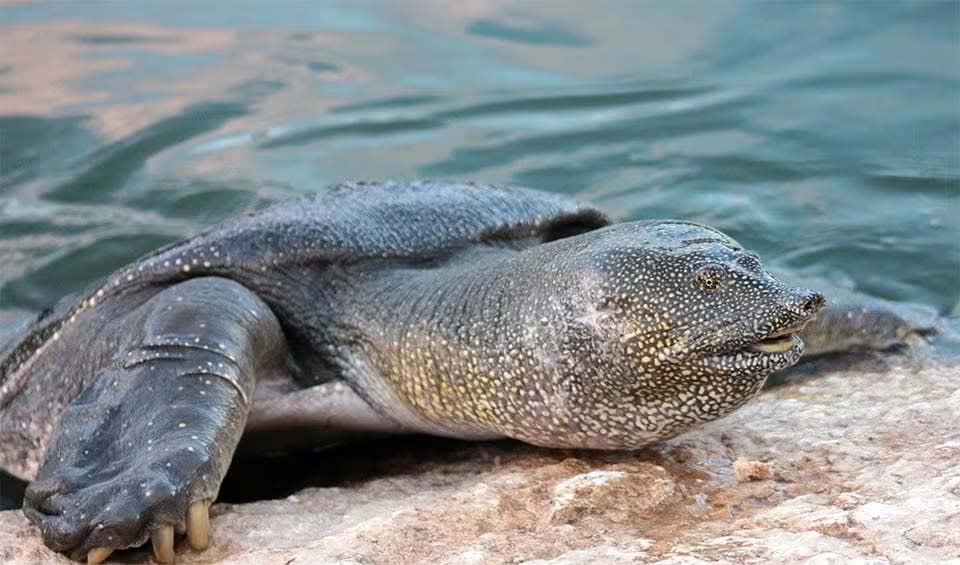Native to the freshwater bodies of Africa and parts of the Middle East, this turtle is particularly notable for its distinctive physical features and behaviors that set it apart from more commonly known hard-shelled turtles.
One of the most remarkable characteristics of the African softshell turtle is its shell, which, unlike the hard, bony shells of other turtles, is leathery and flexible. This soft shell is composed of thick, rubbery skin that feels somewhat pliable to the touch. The color of the shell usually blends with the muddy or sandy environments it frequents, typically displaying a range of olive to dark brown hues, often speckled or mottled, which provides excellent camouflage against predators.
Another unique aspect of the African softshell turtle is its body shape. It has a flattened, streamlined profile with a long, pointed snout, which helps it move swiftly in water and burrow easily into the soft riverbeds where it often hides from threats.
Adapted to an aquatic lifestyle, the African softshell turtle has several interesting behaviors. It is an excellent swimmer, using its webbed feet to easily navigate through water. This turtle spends most of its life submerged, coming to the surface primarily to breathe or to bask in the sun on the riverbanks. It is mostly nocturnal, doing much of its hunting and feeding during the night. Its diet is varied, consisting of fish, mollusks, insects, and occasionally vegetation.
A fun fact about this species is its method of breathing. The African softshell turtle can perform a unique form of respiration known as cloacal breathing, which allows it to take in oxygen directly from the water through its cloaca, an opening used for excretion and reproduction. This ability means it can stay underwater for extended periods without coming to the surface for air.
Distribution
 Angola
Angola Benin
Benin Cameroon
Cameroon Chad
Chad Congo-Brazzaville
Congo-Brazzaville Côte D’ivoire
Côte D’ivoire DR Congo (Kinshasa)
DR Congo (Kinshasa) Egypt
Egypt Equatorial Guinea
Equatorial Guinea Eritrea
Eritrea Ethiopia
Ethiopia Gabon
Gabon Gambia
Gambia Ghana
Ghana Greece
Greece Guinea-Bissau
Guinea-Bissau Guinea
Guinea Israel
Israel Kenya
Kenya Lebanon
Lebanon Liberia
Liberia Mali
Mali Mauritania
Mauritania Namibia
Namibia Niger
Niger Nigeria
Nigeria Senegal
Senegal Sierra Leone
Sierra Leone Somalia
Somalia South Sudan
South Sudan Sudan
Sudan Syria
Syria Togo
Togo Turkey
Turkey Uganda
UgandaAnything we've missed?
Help us improve this page by suggesting edits. Glory never dies!
Suggest an editGet to know me
Terrestrial / Aquatic
Altricial / Precocial
Polygamous / Monogamous
Dimorphic (size) / Monomorphic
Active: Diurnal / Nocturnal
Social behavior: Solitary / Pack / Herd
Diet: Carnivore / Herbivore / Omnivore / Piscivorous / Insectivore
Migratory: Yes / No
Domesticated: Yes / No
Dangerous: Yes / No




